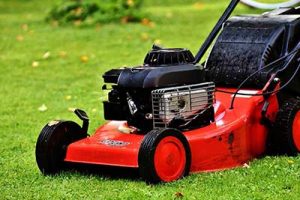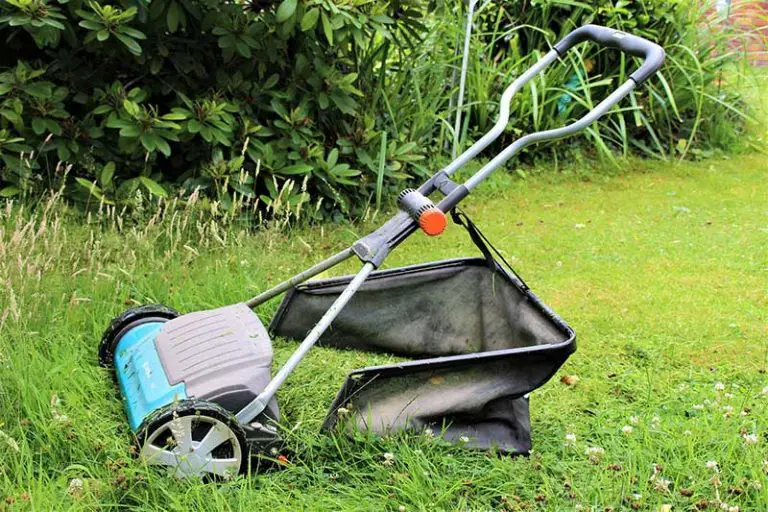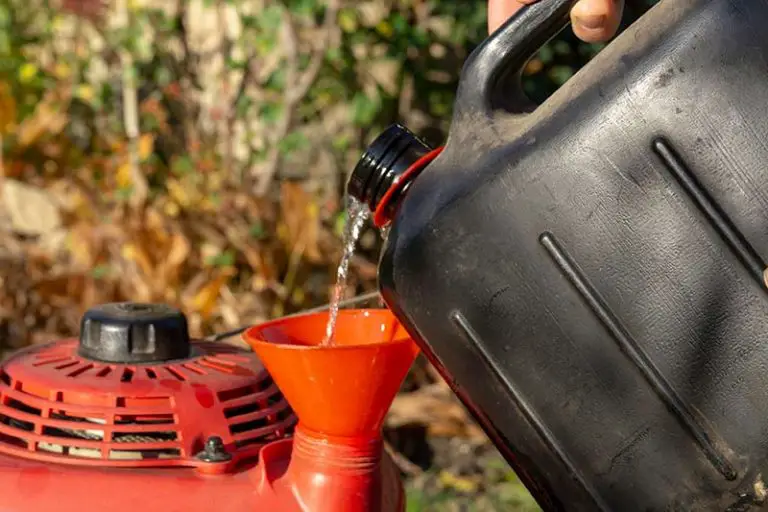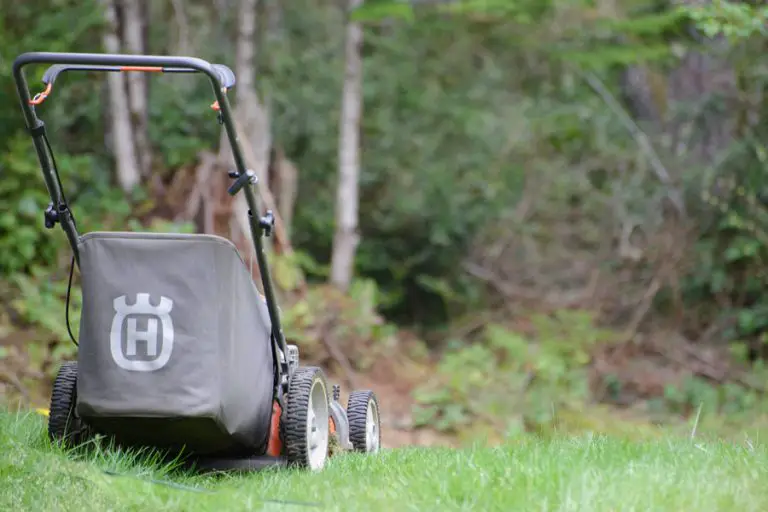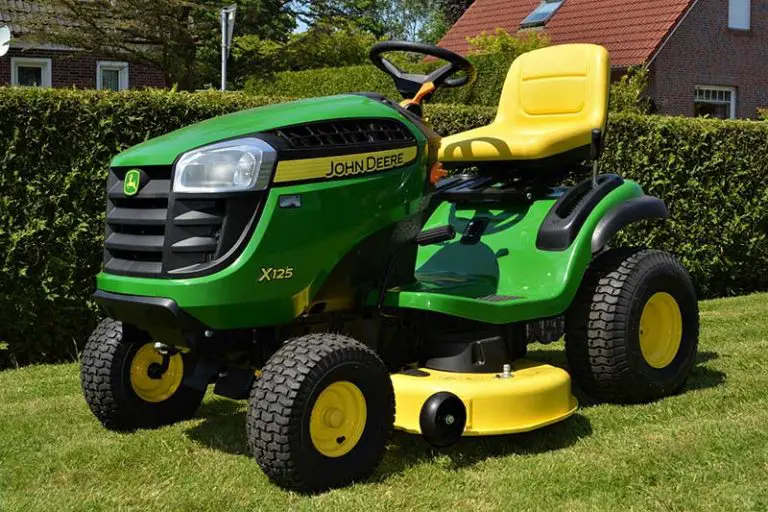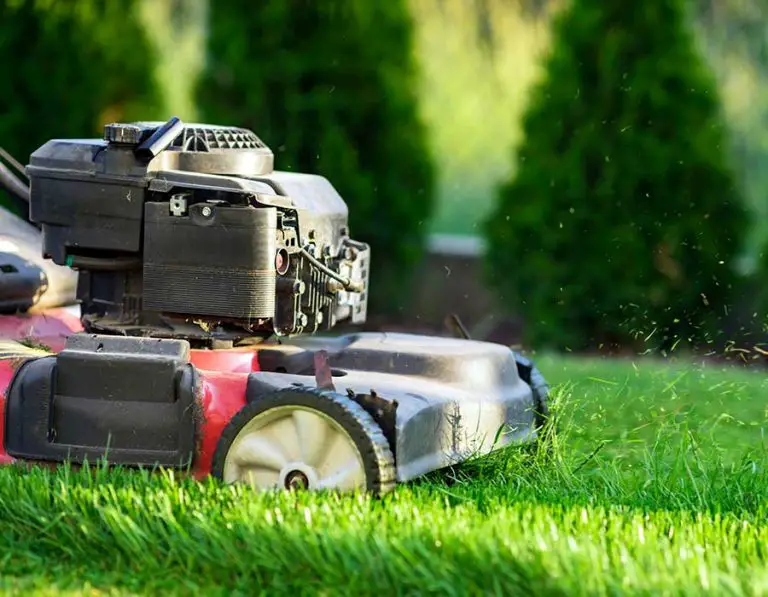What Is the Best Height to Cut Grass?
The height at which you cut your grass is one of the most important factors when it comes to the overall health and appearance of your lawn.
In general, the best height to cut grass is around 2 to 4 inches tall. With that said, many factors should be considered when determining the best height to cut the grass on your lawn, including the climate you live in and your specific species of grass.
This article will outline how to determine the best height to cut your grass in different situations so that you can maintain a healthy lawn all year long.
Ideal Length for Most Grass Types
Generally speaking, two to four inches is the best length for grass. You need to keep it short enough to allow water into the roots, but also long enough that it can shade the soil from too much sun. The two exceptions to this rule are Bermuda and Zoysia grasses; you can cut these grass types to one to two inches.
Dangers of Cutting Grass Too Short
There are two main concerns to consider about cutting your lawn too short: soil compaction and sun damage.
Cutting the grass too short can lead to compaction in the soil. This can cause runoff and affect how much water reaches your lawn’s roots, and will necessitate an aeration job to loosen the compacted dirt. The lack of protection from the sun also means that weed seeds have a greater chance of sprouting in your lawn.
Although some people think you should cut your grass almost down to the dirt, this is a misguided notion. This only serves to cause damage to your grass and increase the potential for those nasty weeds.
Instead, allow your grass to grow to the ideal length before you begin mowing, which will allow it to shade itself from the sun. It’s particularly important to let your grass grow as long as possible before mowing new grass for the first time.
If any weeds do sprout in your lawn, simply pull them out by hand, use a weed trimmer, or employ a post-emergent herbicide.
Best Height for Different Climate Conditions
In climates with strong winds and little rain, two inches is often the best height to cut grass. This allows the grass to develop a strong root system that can better withstand wind damage while also protecting it from too much sun exposure.
However, if you don’t water your lawn regularly due to drought water restrictions, then increase the height of your blade by one inch to allow more time for the moisture to reach the roots before evaporating off of the leaf blade.
In rainy climates, many people water their lawns unnecessarily. Doing this can cause soil compaction and lead to other issues. If your area receives a lot of rainfall, then simply allow the grass blades to curl over to protect the soil from getting washed away. There’s no need to have a perfectly manicured lawn during rainy weather, so leave it alone until conditions improve.
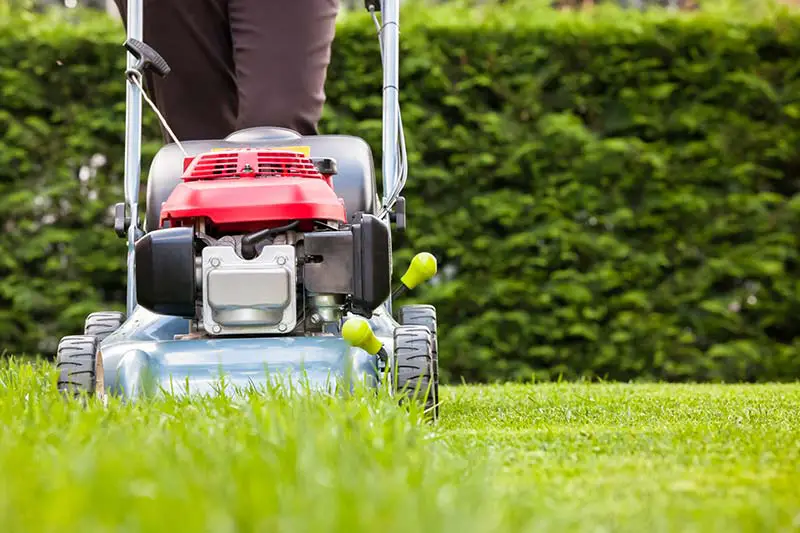
Your Type of Grass Matters
The type of grass you have plays a role in determining how long your grass should grow. Refer to our grass identification guide for more thorough guidance on figuring out what type of grass you have on your lawn.
Kentucky Bluegrass
Kentucky bluegrass grows best when cut at three to four inches, while Bermuda grass only needs to get mowed at one inch. This is because bluegrass has larger leaves that are better suited for warmer climates. Bluegrass also grows most actively during the spring, which is when it needs to get cut more often.
Bermuda Grass
Bermuda grass, on the other hand, has smaller leaves that grow in bunches. It thrives better in shady areas and can handle colder weather conditions. This means you should only need to mow once a week during the summer months.
Perennial Ryegrass
Perennial Ryegrass is another type of grass you can cut to three to four inches. It’s dormant in the winter and actively grows during the spring and fall seasons.
St. Augustine & Turf Type Fall Fescue
Cut St. Augustine and Turf Type Tall Fescue to four inches or more. They are both heat-loving grasses that need to get cut often during the summer.
Centipede Grass
Three inches is a quality length for centipede grass. It thrives in warmer climates and needs to get cut often.
Buffalo Grass
Keep Buffalo grass cut down between two to four inches. This allows it to better handle the hot, dry conditions present in many parts of North America.
Zoysia Grass
When cutting Zoysia grass, remember that it’s a shade-loving species whose blades grow outward from the crown. Your best bet is to keep this type of grass at one inch.
Mowing Often is Beneficial to Your Lawn
Don’t let too much time go by between each mowing session. Especially during the hottest summer months, you should mow every five days at least. When you do, the grass will stand up straighter and look healthier. The mower blades should break off any thatch buildup that may have accumulated over time.
Mow when the grass is dry so it can get evenly cut to size. If you’re dealing with a weed infestation, then don’t try to kill all of them at once. Pull the more visible ones by hand, then mow over any that remain, which will act as a deterrent against future weed growth.
If you can’t reach certain portions of your lawn with your usual mower blades, then consider getting another type of blade to cut those areas shorter. For example, invest in a detachable grass-cutting blade shaped like a scythe if you have trouble with spots of tall grass. Don’t be afraid to experiment with different heights. However, always do so based on your type of grass and the time of year.
The best time to mow your lawn is during mid-morning hours before temperatures get too high. Your lawn will spend the rest of the day converting fallen grass blades into healthy soil. Have you recently done some heavy lawn fertilization? If so, then you might need to mow more often for a while as the fertilizer does its thing.
How to Change a Mower’s Height
Every mower is a bit different. Check the manual to see how to raise or lower your mower’s blades, which are also known as the height-of-cut system. Typically, all you do is raise or lower the cutting bar so it sits at the desired height.
After you do this, check to see if any other components need any adjustments before you start mowing. For example, some mowers have bumpers that touch the ground to help create a straight line of cut grass. If these no longer align properly, then make some adjustments to ensure your yard doesn’t end up looking lopsided.
You should also make sure your lawn mower blades are sufficiently sharp each time you mow – we have provided step-by-step guidance on this process in our article How to Sharpen Lawn Mower Blades. Change out your old blades for a new pair every season. If you have an older machine with all its parts still in good condition, then changing the blade will give it a new lease on life.
How to Measure the Height of Your Lawn’s Grass
The best method involves a simple ruler or measuring tape. Put on a glove and walk across your entire lawn from corner to corner, checking the height of the grass as you go.
Write down these measurements on a sheet of paper and keep this record for future reference. This becomes helpful if you ever need to adjust your mower’s blades or head out with a weed whacker to kill any overgrowth.
Lawn Mowing Tips
Now that you know which height to cut your grass to, have the lawnmower height set properly, and are working with a sharp blade, use the following tips when mowing.
Make sure you’re mowing in the right direction. If this means overlapping any previous lines of cut grass, then so be it. Just make sure to follow these general guidelines:
When cutting Bermuda grass, for example, aim for a clockwise path that starts from the right side of the lawn. Mow in a counterclockwise fashion when cutting Zoysia grass, which begins on your left side. When mowing Bermuda grass for the third time in one season, change grain direction by 90 degrees to avoid putting stress on its roots.
Don’t forget to use common sense. Is your mowing pattern giving you the desired look? If so, then you’re doing it correctly.
Should You Leave Grass Clippings on the Lawn?
In the majority of cases, you should leave the clippings where they lay. They will decompose quickly and help fertilize your lawn as they do so. Lawn clippings also act as a no-effort organic fertilizer and mulch to protect the surface of the soil in your lawn.
You may have to remove clippings in the following situations:
- You’re dealing with an insect infestation that left mounds of dry grass behind.
- You are mowing too frequently, which could lead to overfertilization and fertilizer burn.
- You’re mowing wet grass, which can make for an uneven cut.
For most people, however, leaving the clippings on the lawn is the best choice. If you choose to bag your clippings, see our article What to Do with Grass Clippings for a number of different ways they can be repurposed around your yard and home.
How Long Does it Take Grass Clippings to Decompose?
It depends on the type of grass, climate, weather conditions, and other factors. It can take anywhere from three to four weeks for clippings to decompose into the soil.
Are Grass Clippings Organic?
Yes, grass clippings are organic. They will decompose into the soil just like any other organic matter you find in your yard.
Choose Right for Your Grass Type
The ideal length for most grass types is between 3–4 inches. Cutting your lawn too short can damage or kill the roots of the blades, which leaves you with a more difficult time getting rid of weeds and pests. Set your mower to the desired height for your grass type, and enjoy your healthy lawn.
See our article How to Stripe a Lawn for guidance on how to turn your plain grass into a manicured, aesthetically pleasing lawn.

